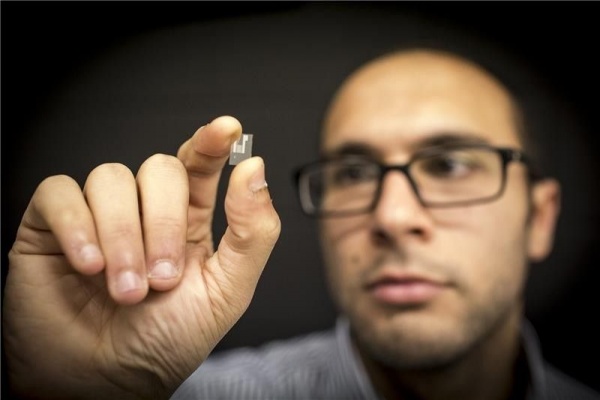According to the "Daily Science" website, researchers at RMIT University in Melbourne have achieved a significant breakthrough by using sound waves to control micro and nano-scale manufacturing. This innovative approach involves using high-frequency sound waves to precisely manage the thin film fluid coverage on specially designed chips. The findings were recently published in the Proceedings of the Royal Society A, marking an important step forward in advanced material manipulation.

Use sound waves to control the chip surface as you wish
This new technique builds upon existing thin-film technology and microfabrication methods, offering a creative leap in precision engineering. Potential applications range from advanced coating techniques in painting to medical wound healing, 3D printing, micro-casting, and even microfluidic systems. The ability to manipulate fluids at such a small scale opens up exciting possibilities for future technologies.
Professor James Friend, head of the RMIT Micronano Research Centre, highlighted that the team has developed a portable system suitable for unconventional nanofabrication processes. He explained that traditional methods often struggle with precise control, especially when dealing with fluid spread due to structural limitations. However, by using sound waves, they can now guide the fluid’s movement on the chip surface with remarkable accuracy.
"Depending on the thickness of the fluid layer, it can either be drawn closer or pushed away by the high-frequency sound waves," Fland noted. This unique capability allows for greater control over how materials are applied and distributed at the micro-level.
The technology is called "acoustowetting," and it relies on a special type of chip made from piezoelectric materials—substances capable of converting electrical energy into mechanical vibrations. These chips are embedded with microelectrodes that, when connected to a power source, generate high-frequency sound waves. These waves then interact with the thin fluid films, enabling precise control over their placement and behavior.
This development could revolutionize various industries by offering a more efficient, scalable, and controllable method for manipulating fluids at the microscopic level. As research continues, the potential uses of acoustowetting may expand even further, paving the way for smarter and more accurate manufacturing processes.
Bench and pedestal wheels provide metal removal, deburring, shaping and sharpening needs. Available to fit many sizes and specification of machines, our variety of abrasive selection meets the application need for high speed tool steels, carbon steel, non-ferrous metals and carbide tooling.
The wheel's superior, premium-vitrified BOND construction means you get the surface you need for the toughest grinding applications.
Because a portion of the bonded grains slough off during use, you are assured of self-renewing, clean grinding surfaces.
KEMEI aim to ensure that your grinding results are top-notch and hassle free with these ultra-hard, durable, long-lasting, precision accessories.
These top-quality, potent wheels won't de-temper your valuable tools because they cut fast and Cool, thereby minimizing tool loss and maximizing grinding-assembly performance.
Kemei produce and aim on the following types grinding tools, such as aluminum oxide grinding wheel, silicon carbide Grinding Wheels, mounted points, Diamond Grinding Wheels, CBN Grinding Wheels and all types of saw blades and cut off wheels.
If you need any type of grinding tool or professional advice about grinding on your workpieces. Don`t hesitate to contact us!
Bench Grinding Wheel,Pink Grinding Wheel,Bench Grinder Wheel Grits,Bench Grinder Grinding Wheels
Henan Jinlun Superhard Material Co., Ltd , https://www.jinlunsuperhard.com